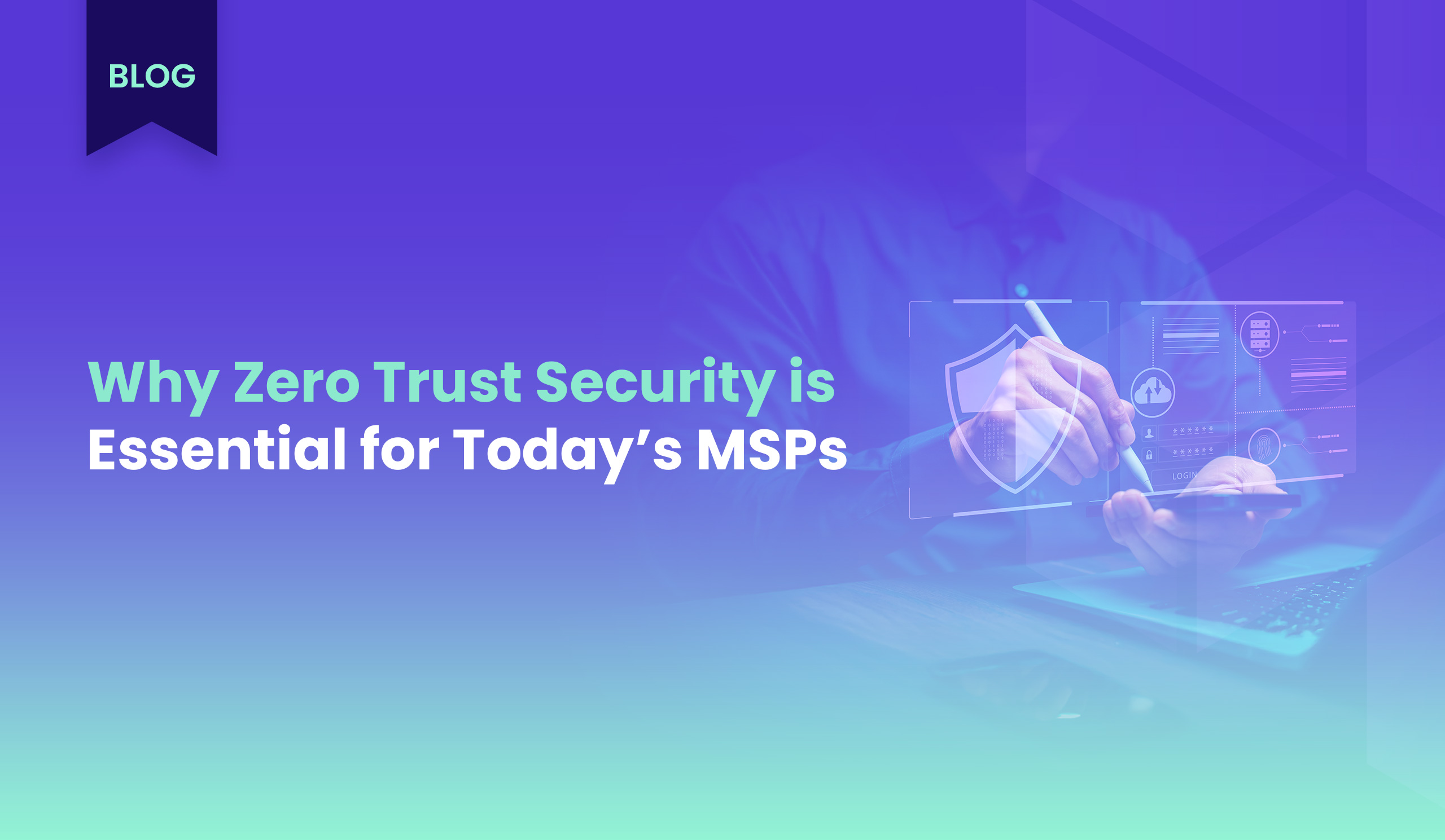Why Zero Trust Security Is Essential for Today’s MSPs
Managed Service Providers (MSPs) play a crucial role in the digital ecosystem, overseeing IT infrastructure for businesses that depend on cloud computing, remote operations, and interconnected networks. However, as MSPs broaden their service offerings and embrace new technologies, their susceptibility to cyber threats also increases. Adopting a zero trust security model is a fundamental step toward safeguarding both MSP networks and their clients’ sensitive information. In this article, we examine why zero trust is a critical necessity for MSPs in the modern era.
Author
Date
Category
All Categories
- AI-powered security
- Attacks & Threats
- Cybersecurity
- Hybrid Cloud
- Network
- Network Firewall
- Network Protection
- News
- Remote Workforce
- Security
- Zero Trust
Contents
Popular Posts
Product
Join the Newsletter

Managed Service Providers (MSPs) play a crucial role in the digital ecosystem, overseeing IT infrastructure for businesses that depend on cloud computing, remote operations, and interconnected networks.
However, as MSPs broaden their service offerings and embrace new technologies, their susceptibility to cyber threats also increases. Adopting a zero trust security model is a fundamental step toward safeguarding both MSP networks and their clients’ sensitive information. In this article, we examine why zero trust is a critical necessity for MSPs in the modern era.
Zero trust is based on the principle that no user, device, or service—whether inside or outside the corporate perimeter—should be inherently trusted. Instead, every access request undergoes continuous authentication, verification, and monitoring. This approach not only minimizes attack surfaces but also prevents lateral movement within networks. For MSPs managing multiple client environments, zero trust offers dynamic security controls that adapt to evolving threats while maintaining operational efficiency.
Historically, perimeter-based security models created vulnerabilities where attackers could move freely once they breached initial defenses. Zero trust mitigates this risk by emphasizing network segmentation. By isolating workloads and restricting user privileges, MSPs can significantly reduce the impact of ransomware, data breaches, and other cyber threats. Furthermore, zero trust’s continuous monitoring and analytics provide MSPs with real-time visibility into user behavior across different client networks, accelerating threat detection and response.
Key Reasons MSPs Should Implement a Zero Trust Approach
- Stronger Access Controls: Every identity is continuously verified before gaining access to network resources, allowing MSPs to enforce customized security policies for users, devices, and applications.
- Continuous Monitoring: Zero trust ensures real-time surveillance of network traffic and user activities, helping MSPs identify and mitigate suspicious behavior before it escalates.
- Micro-Segmentation: Dividing networks into smaller, controlled segments prevents attackers from freely moving laterally, keeping critical assets protected from potential intrusions.
- Robust Identity Management: Advanced IAM solutions authenticate users, devices, and applications, ensuring that only legitimate entities can access sensitive data.
- Adaptive Security Policies: Zero trust dynamically adjusts security settings based on contextual factors such as user location, device status, and risk levels to enhance overall protection.
- Reduced Attack Surface: By never assuming implicit trust, MSPs minimize entry points for cyber threats, lowering the risk of security breaches across multiple environments.
- Limited Breach Impact: If an attacker gains access to an account or endpoint, zero trust restricts their movement, containing potential damage and reducing exposure.
- Enhanced Compliance: Many industry regulations require strict access controls. Zero trust aligns with these mandates by enforcing least-privilege access policies.
- Comprehensive Visibility: Authentication and monitoring provide MSPs with a holistic view of user activities, device statuses, and network traffic across client environments.
- Seamless Scalability: As MSPs onboard new clients or expand services, zero trust security seamlessly adapts, ensuring consistent policy enforcement without weakening defenses.
- Enhanced Client Trust: Businesses seek MSPs that prioritize cybersecurity. Implementing zero trust showcases a strong commitment to protecting assets, boosting reputation and competitiveness.
- Future-Ready Security: Zero trust aligns with emerging cybersecurity trends, enabling MSPs to stay ahead of evolving threats and maintain a proactive security stance.
In an era where cyber threats constantly evolve, zero trust empowers MSPs with a proactive security framework built on continuous verification, segmentation, and strict identity management. Instead of relying on reactive defenses, MSPs can implement forward-thinking strategies that mitigate risks before they escalate. Businesses increasingly look for service providers that offer end-to-end protection, especially in hybrid and remote work environments. By embedding zero trust into their security architecture, MSPs not only fortify their own defenses but also differentiate themselves in a competitive landscape where trust and robust security capabilities are paramount.
Discover how zero trust network security plays a pivotal role in Timus SASE.
Get Started with Timus
Zero Trust. Adaptive Cloud Firewall. Secure Remote Access. In one.
